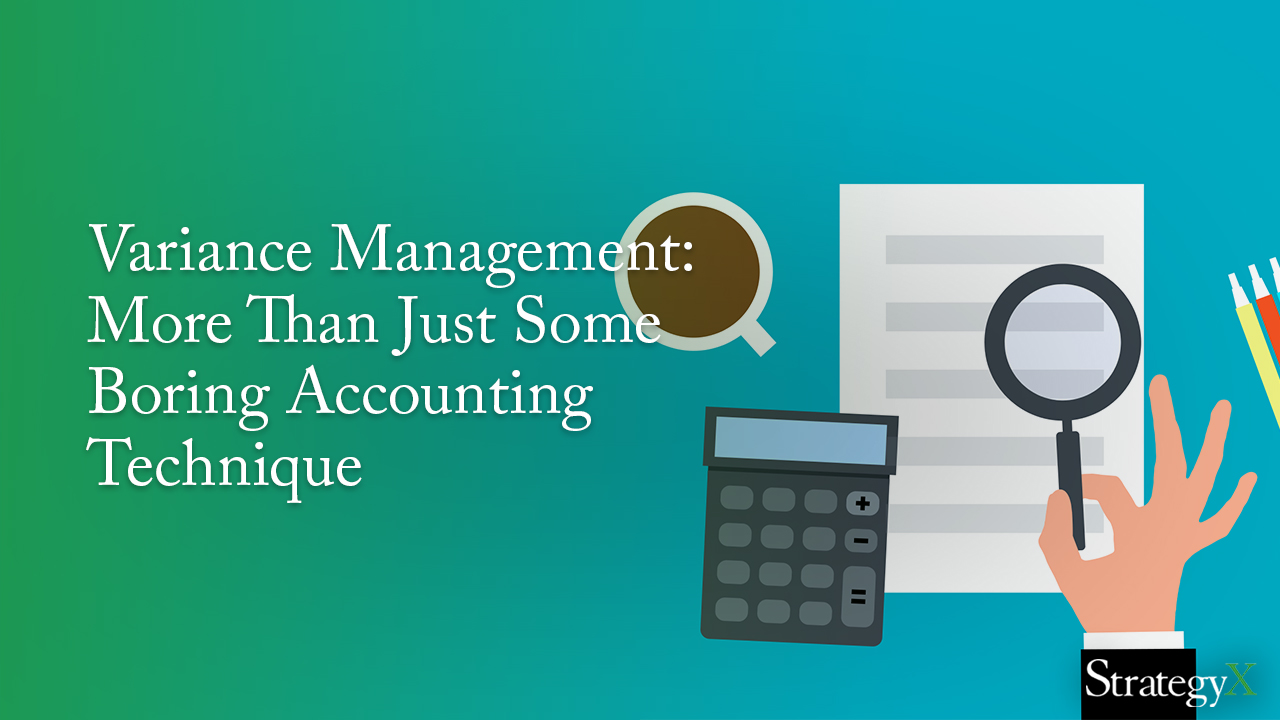Not knowing why something went wrong or why a result ended up completely different than the expectation is annoying for anyone to deal with. The stress from this is only intensified when you are running a business.
The good news is that there are ways to learn from these results and better course-correct in the future. One great “tool” that you can use is variance management.
When boiled down to its most basic form, variance management is an investigation and calculation that will show the differences between two or more factors. One possible example may be the difference between the marketing budget and the sales of a product.
StrategyX, a strategy execution software, is a great way to help calculate variance and make conclusions from the data. It comes with many features that can help you better meet your financial targets, among countless other benefits.
Our hope for this post is to quickly shed some light on what exactly variance management is and explain its importance in the management process. We will keep this post brief while also providing you the essential information we think you should know.
What is Variance Management?
Variance management, also known as variance analysis, is conducting a review to capture and put actions in place to manage negative or positive variances between the target and actual number.
Variance management is a vital process that all management should utilize to identify problems and opportunities from historical data. It allows you to understand better why your business experiences fluctuation in production, profits, and more.
While variance management is most associated with financial management, it should be used for measuring, monitoring, and managing all factors for success in a business.
What Does Good Variance Management Look Like?
Good variance management should identify both positive variances (above target) and negative variances (below target).
Positive variances should be identified so that the team members can know what caused the positive variance and what can be done to continue that positive variance.
On the opposite end of the spectrum, negative variances should also be identified to avoid performing specific actions, stop making unneeded purchases, and any other negative factors.
When done right, variance management will help you manage key success factors better and allow your business to achieve its goals.
What Could Happen if You Don’t Measure Variances
While it may seem tempting to skip measuring variance to save time, it is a process that more than pays off for you to do.
Not measuring variance will leave you in the dark on various things. Without a proper investigation and calculation, you will forever be unsure why things turned out the way they did.
Here are a few things you can identify by measuring variance:
- Budget problems
- Issues with management/the direction management is taking
- Revenue
- Expenses
- Any theft/criminal activities
- Issues with production
Measuring variance is vital for identifying issues and behaviors that the company and individuals are taking. Learning from these trends will allow you to steer your company in the right direction and make it as profitable as it can be.
What Do You Do Once You Identify a Variance?
After identifying a variance, it is time to determine a course of action. Your action method will differ depending on whether you are above or below target.
A positive variance will be a good thing. In this case, evaluate what is working and either continue doing it as you are or focus more intensely on improving and refining those aspects.
If you show a large amount of negative variance, this will indicate that you should do something differently. For instance, if your sales were down 15% compared to last quarter, this will show that you will need to make a change. From this information, you may decide that downsizing production in a particular area may be the best course of action.
When reporting, it is essential that anyone who looks at the report, regardless of their technical knowledge, should be able to tell immediately if the variance is on or off-track.
Line charts will be the best visual aid when it comes to reporting. They are universally understood and convey much information with a simple design.
In short: create a plan of action from the data you obtain and follow it.
Parting Thoughts
Measuring variance is not easy but is worth the effort. When done correctly, managing variance can help managers better anticipate the future and develop strategies to help their business scale and thrive.
Measuring variance management is a breeze with a strategic planning software platform like StrategyX. As a top-class strategy execution software, StrategyX will allow you and your company to develop a watertight continuous improvement plan and help with countless other aspects of your business.
Have any questions? Consider booking a free demo with us to discuss how StrategyX can improve your processes and workflow. We hope to speak with you soon!



